Wednesday Mar. 22, 2006
The Experiment #3 reports and the revised Expt. 2 reports were due
today.
All of the Experiment #4 materials have been checked out. There
are now plenty of Expt. 3 materials available, however. If you
have not done a book, scientific paper, or experiment report you should
check out an Experiment #3 kit and perform that experiment.
All of the Assignment #2 1S1P reports have been graded.
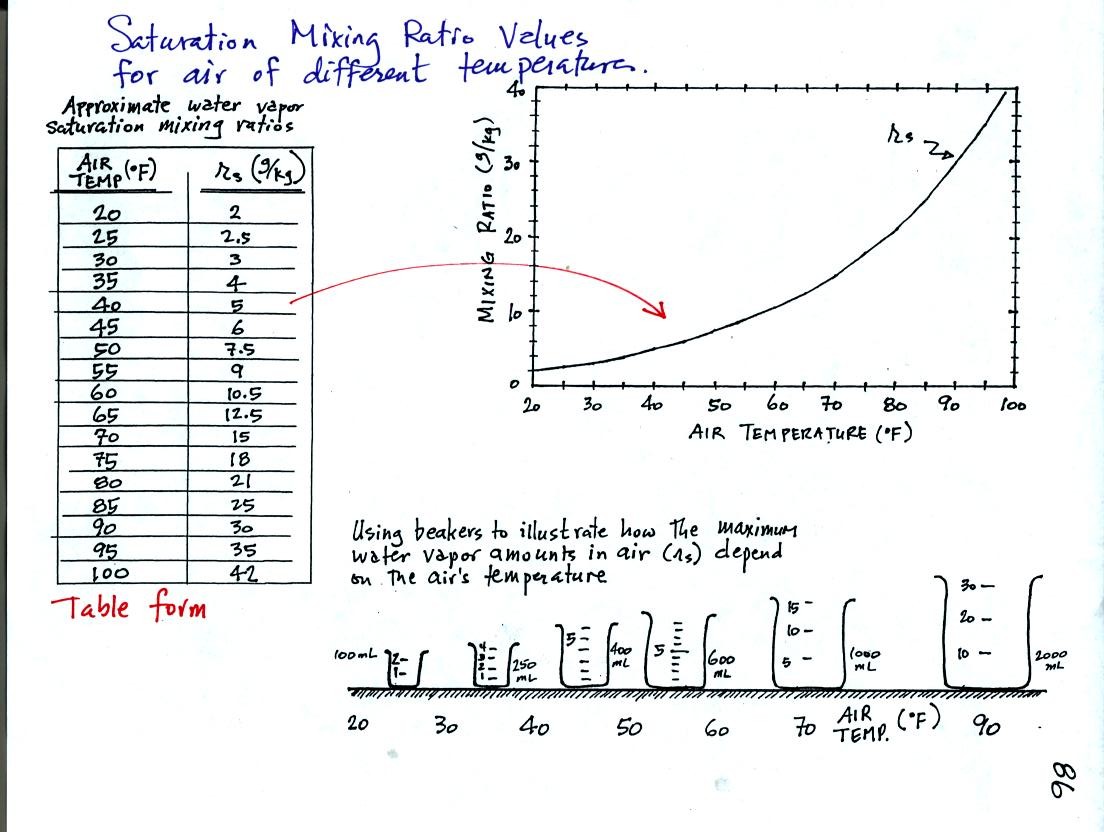
Saturation
mixing ratio values for air with different temperatures. Data are
given in table and graph form. The beakers illustrate the
relative amounts of water vapor that air can contain. We
referred to this data often while working the humidity sample problems
that follow.
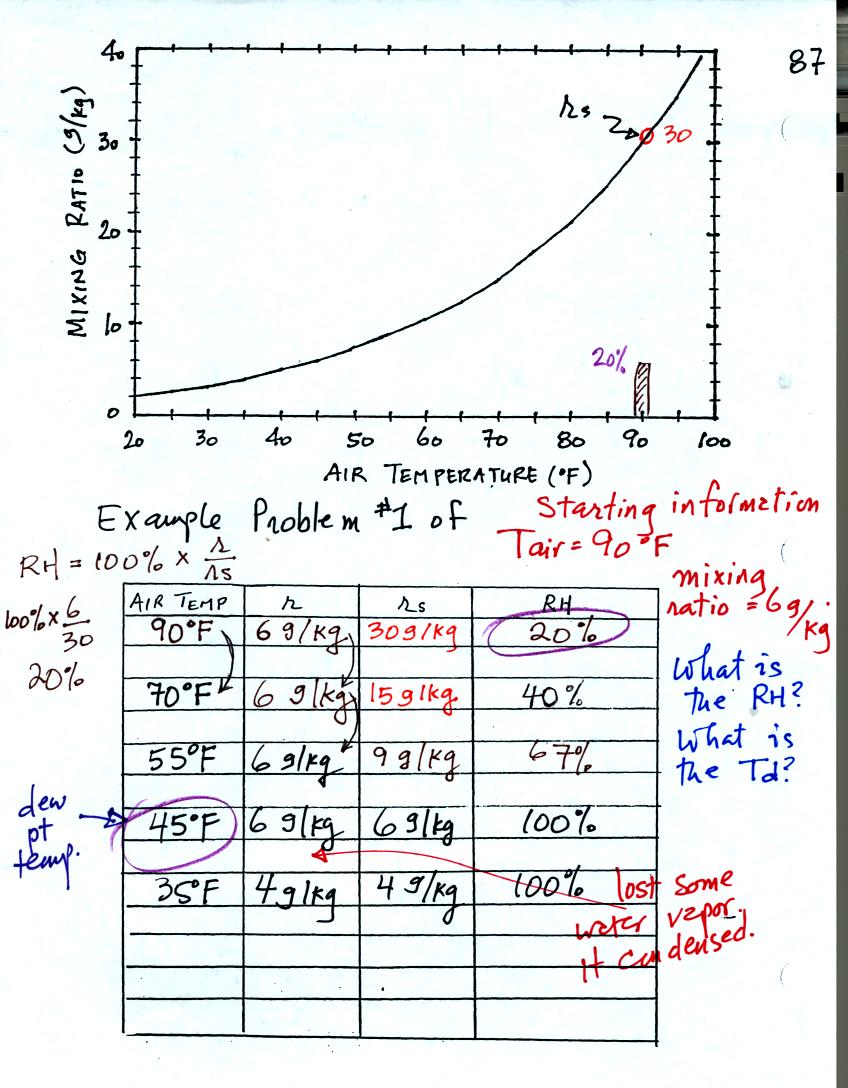
Here is the first sample problem that we worked in
class.
You'll have a
heck of a time unscrambling this if you're seeing it for the first
time. The series of steps that we followed are retraced
below:
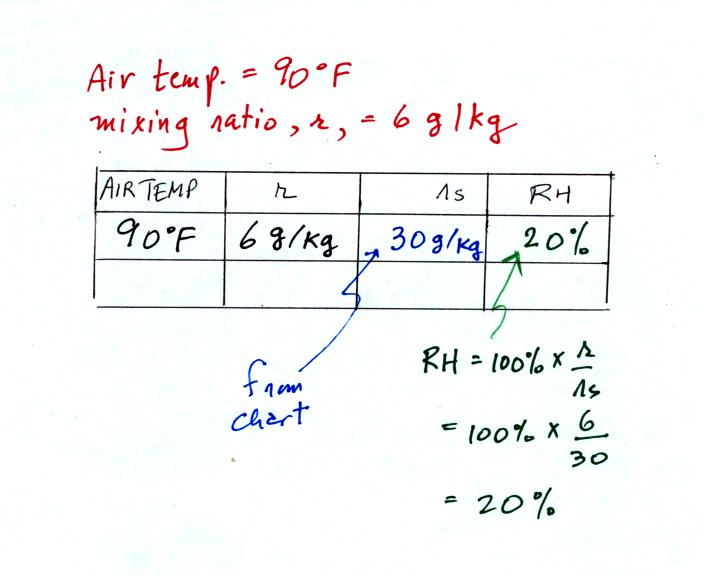
We were given some starting information: an air temperature
of 90 F and
a mixing ratio value of 6 g/kg. We are supposed to find the
relative humidity and the dew point temperature.
We start by entering the data we were given in the table. Once
you know the air's temperature you can look up the saturation mixing
ratio value; it is 30 g/kg for 90 F air. 90 F air could
potentially hold 30 grams of water vapor per kilogram of dry air (it
actually contains 6 grams per kilogram in this example).
Once you know mixing ratio and saturation mixing ratio you can
calculate the relative humidity.
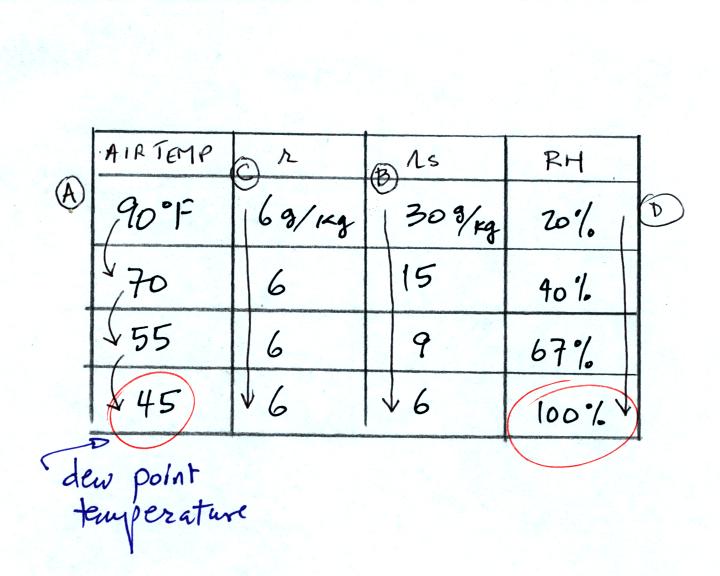
The numbers we just figured out are shown on the top line
above.
(A) We imagined cooling the air from 90F to 70F, then to 55F, and
finally to 45F.
(B) At each step we looked up the saturation mixing ratio and entered
it on the chart. Note that the saturation mixing ratio values
decrease as the air is cooling.
(C) The mixing ratio doesn't change as we cool the air. The only
thing that changes r is adding or removing water vapor and we are doing
neither.
(D) Note how the relative humidity is increasing as we cool the
air. The air still contains the same amount of water vapor it is
just that the air capacity is decreasing.
Finally at 45 F the RH becomes 100%. The dew point temperature in
this problem is 45 F.
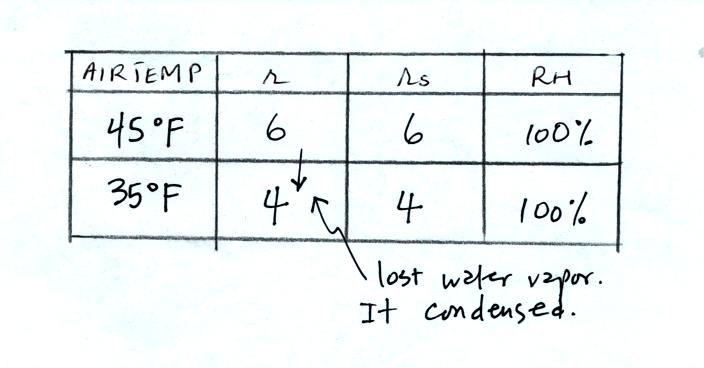
What would happen if you cooled the air below the dew point
temperature. 35 F air can't hold the 6 grams of water vapor
that 45 F air can. You can only "fit" 4 grams of water vapor into
the 35 F air. The remaining 2 grams would condense. If
this happened at ground level the ground would get wet with dew.
If it happens above the ground, the water vapor condenses onto small
particles in the air and forms fog or a cloud. Now because water
vapor is being taken out of the air (and turned into water), the mixing
ratio will decrease from 6 to 4.
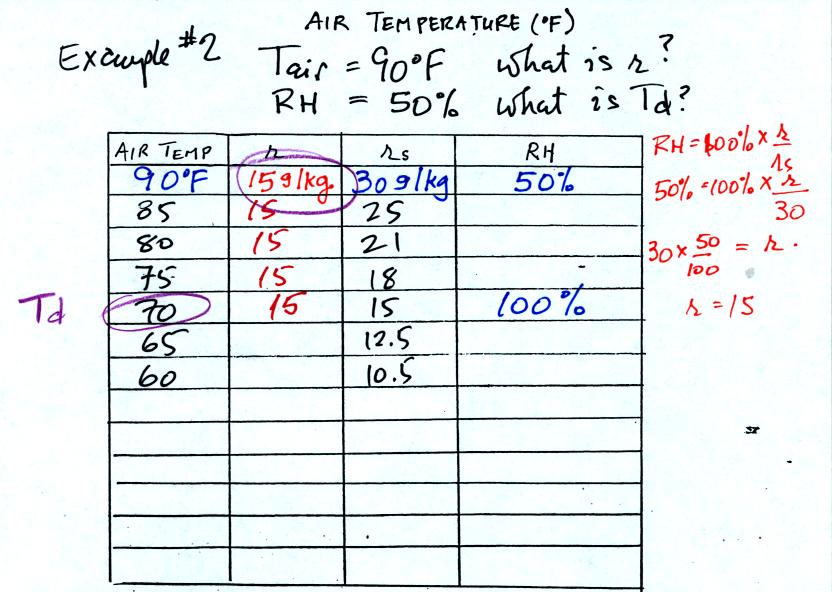
Here is the second sample problem. Given an air temperature of 90
F and a relative humidity of 50% you are supposed to figure out the
mixing ratio (15 g/kg) and the dew point temperature (70 F). The
problem is worked out in detail below.
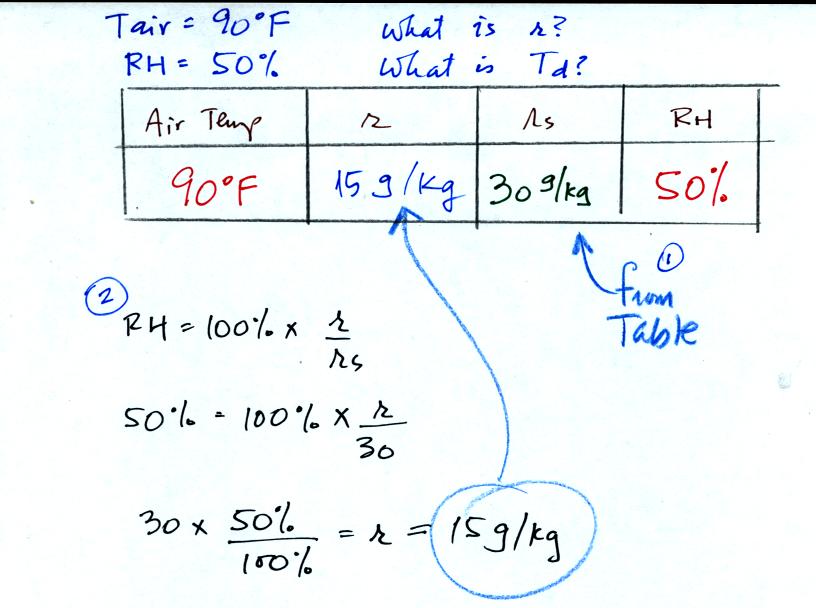
First you fill in the air temperature and the RH data that you are
given. Since you know the air's temperature you can look up the
saturation mixing ratio (30 g/kg). Then you can substitute into
the relative humidity formula and solve for the mixing ratio (15 g/kg).
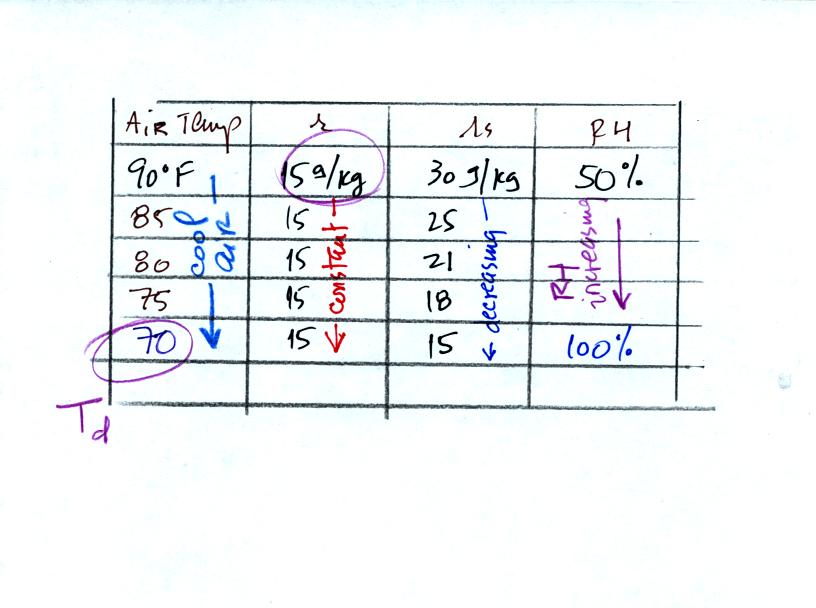
Finally you imagine cooling the air. Cooling causes the
saturation mixing ratio to decrease, the mixing ratio stays constant,
and the relative humidity increases. In this example the RH
reached 100% when the air had cooled to 70 F. That is the dew
point temperature.
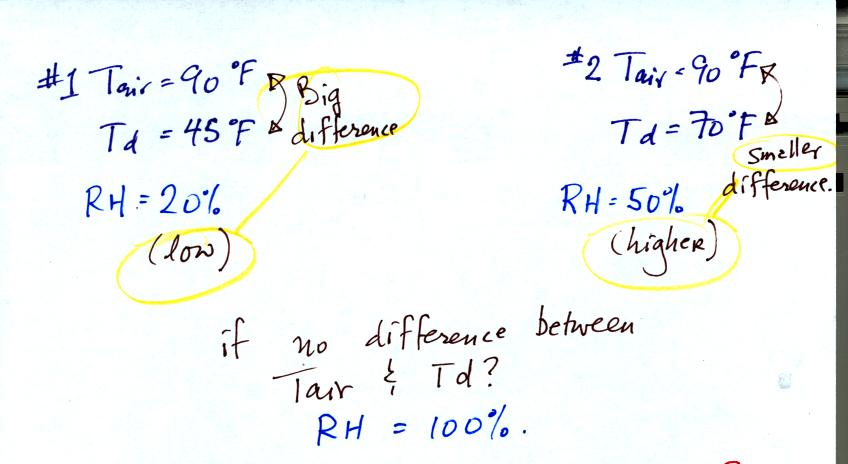
Something new you can learn from Examples 1 and 2. In the first
example the RH was low and the difference between the air and dew point
temperatures was large. In the second example, the RH was higher
and the difference between the air and dew point temperatures was
smaller. If there were no difference between the air and dew
point temperature the RH would be 100%.
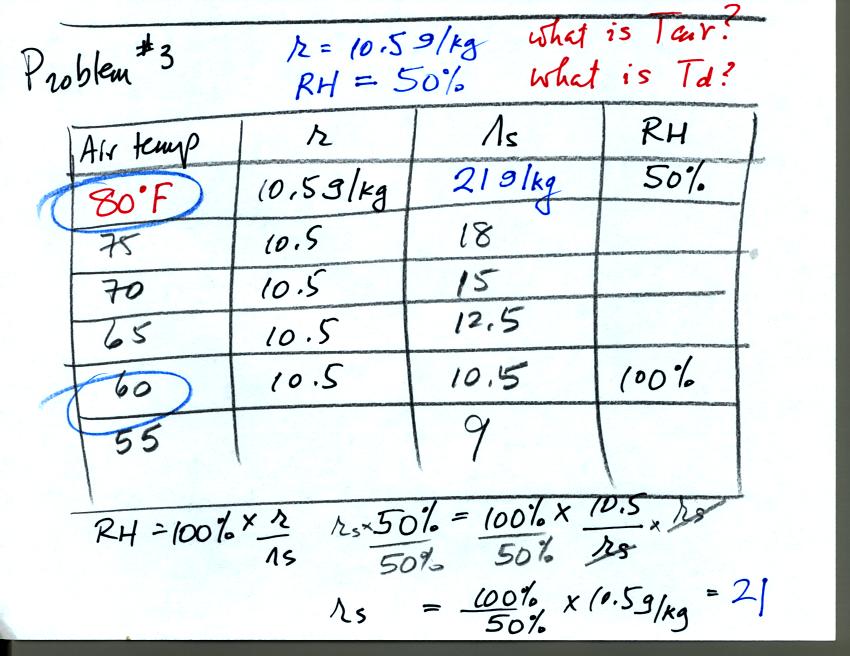
In the 3rd problem we started with RH=50% and r=10.5 g/kg.
The air contains 10.5 g/kg of water vapor, this is 50% of what the air
could potentially hold. So the air's capacity, the saturation
mixing ratio must be 21 g/kg. Once you know the saturation mixing
ratio you can look up the air temperature in a table. Then you
imagine cooling the air until the RH becomes 100%. This occurs at
60 F. The dew point is 60 F.
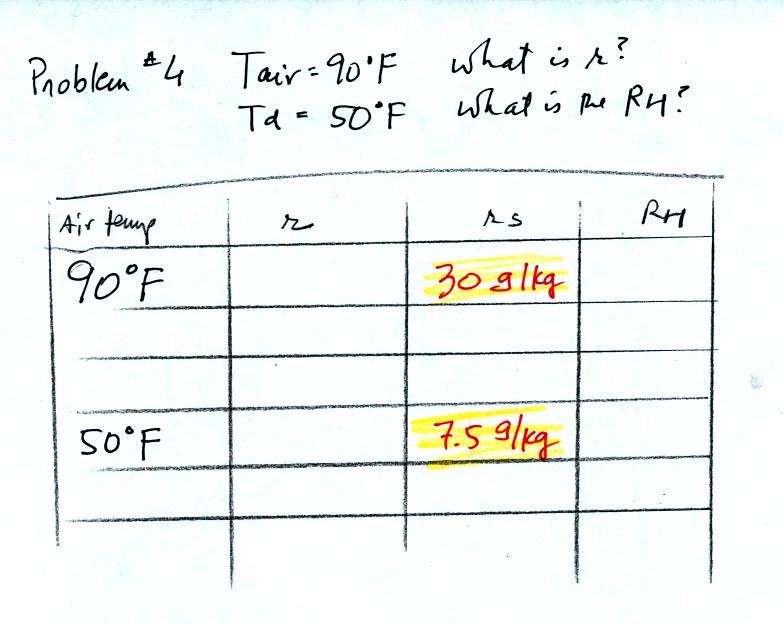
In the last example problem we start with an air temperature of 90 F
and a dew point temperature of 50 F.
The first thing you can do is look up the saturation mixing ratio for
90 F and 50 F air.
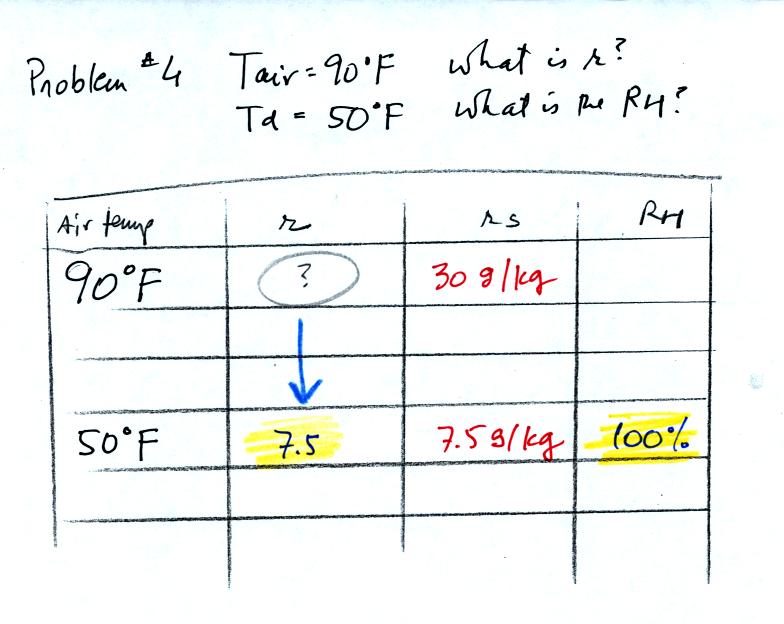
Then we know that if we cool the 90 F air to 50 F the RH will become
100%. Since we know the saturation mixing ratio value at 50 F is
7.5 g/kg we can say the mixing ratio is 7.5 g/kg.
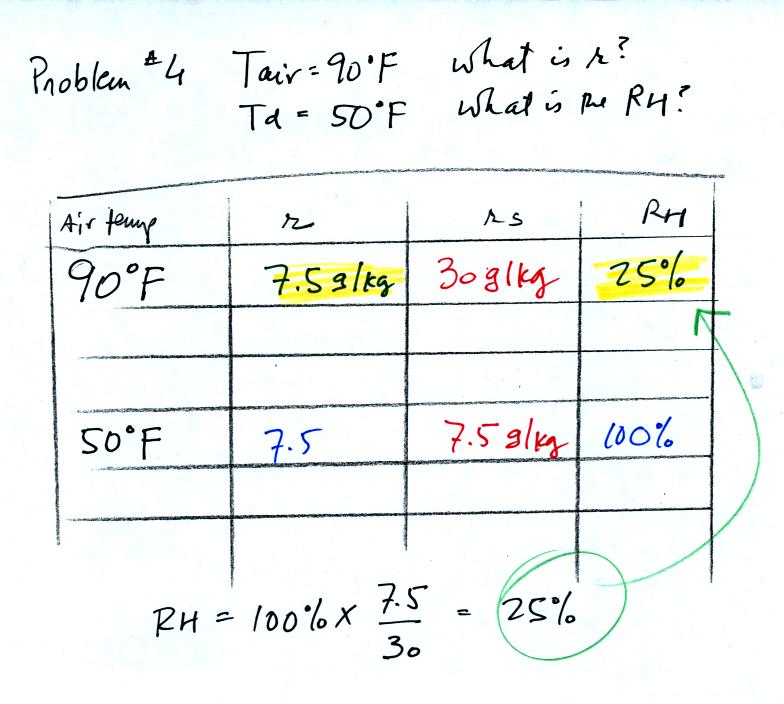
Now that we know the mixing ratio we can compute the relative humidity.
Dew point temperature and mixing ratio both give you an idea of the
actual amount of water vapor in the air. If you know the mixing
ratio you can determine the dew point temperature. If you know
the dew point temperature you can determine the mixing ratio (that's
what we did in this problem).
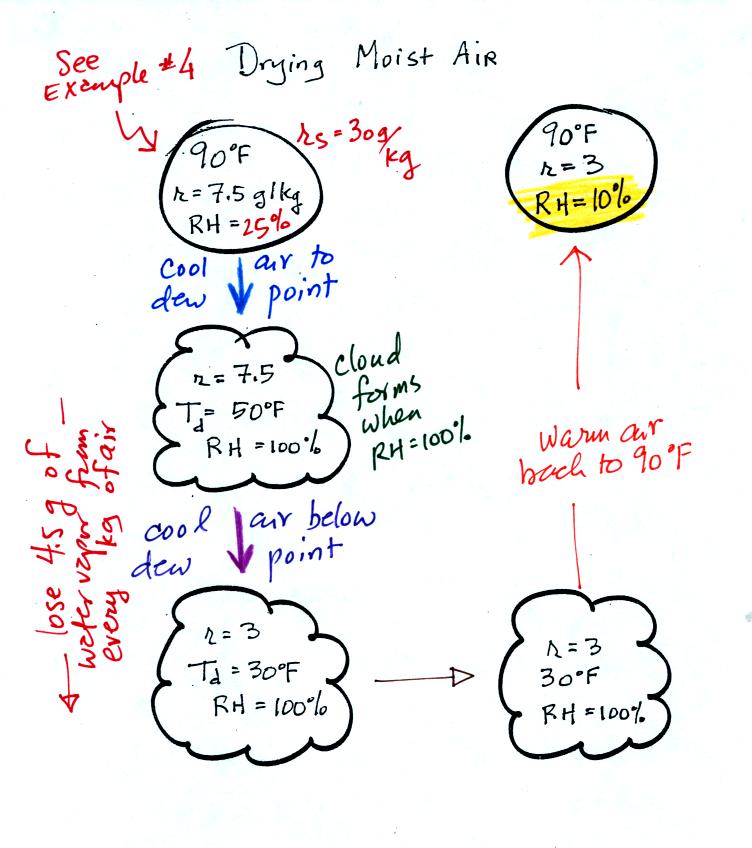
90 F air with 25% relative
humidity is cooled to 50 F the dew point. The relative humidity
reaches 100% at that point. Then the air is cooled some more, to
30 F. The 30 F air can't hold the 7.5 g/kg of water vapor that
was found in the 50 F air. Some of the moisture must
condense. Next the 30 F air now containing only 3 g/kg of water
vapor is warmed to 90 F, the starting temperature. The air now
has a RH of only 10%. The air contains less than half the
moisture it did originally.
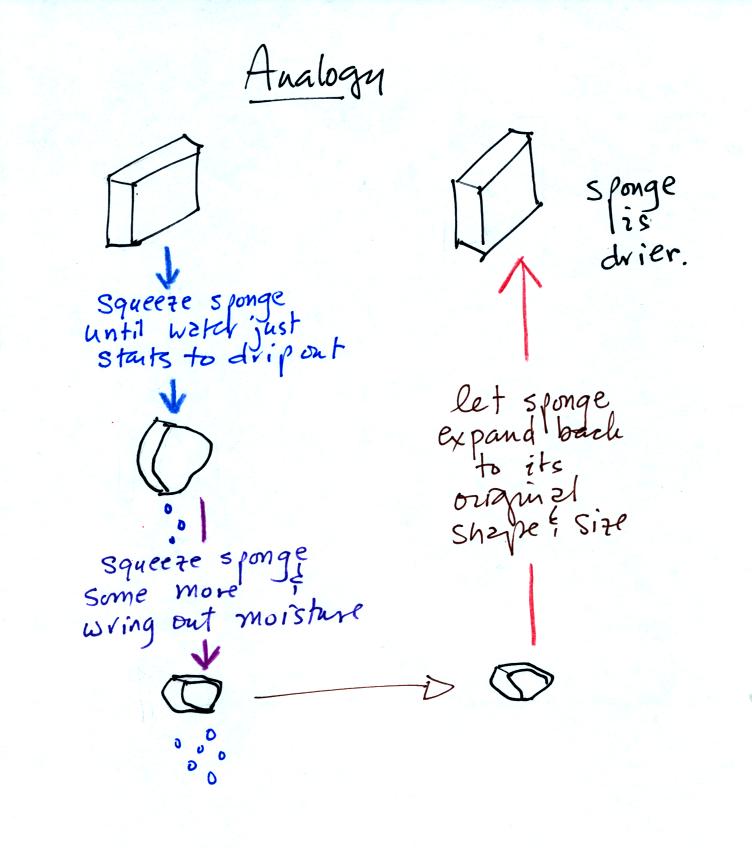
This figure was not shown in
class. Cooling moist air below the dew point is kind of
like squeezing out or wringing out a wet sponge. You start to
squeeze the sponge until water starts to drop out and then squeeze it
some more. Then you let go of the sponge and let it expand back
to its orignal shape and size. The sponge will be drier than when
you started.
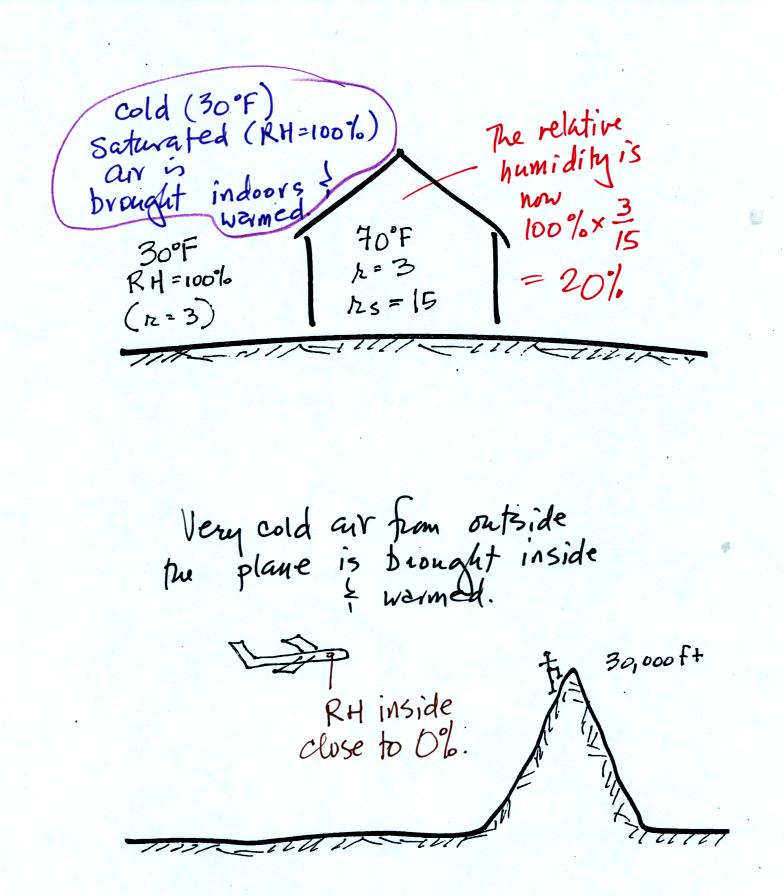
These two figures show where this kind of thing can occur. In the
winter cold air is brought inside your house or apartment and
warmed. Imagine 30 F air with a RH of 100 % brought inside and
warmed to 70 F. The RH will decrease to 20%.
The air in an
airplane comes from outside the plane. The air outside the plane
is very cold (-50 F perhaps) and contains very little water
vapor. When brought inside and warmed to a comfortable
temperature the RH of the air in the plane will be very close 0%.
Actually the ventilation system in the plane will add moisture to the
air so that it doesn't get that dry.















